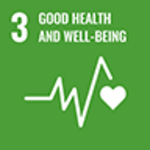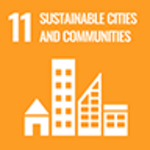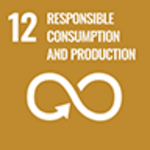
Associate Professor Takao Koshino
Affiliation:Graduate Faculty of Engineering, Graduate School of Engineering of School of Engineering
Areas of Specialization: Urban Design, Architectural Planning, Architectural Design
Research Keywords: Architectural Planning, Architectural Design, Urban Design, Campus Planning, Sustainability
Alma mater: Kudan High School (Tokyo)
Final academic background: Department of Architecture, School of Engineering, Hokkaido University
HP address:http://www.eng.hokudai.ac.jp/edu/div/spacdes/index.html
*This article was originally published in the 4th issue of "Frontiers of Knowledge" and has been re-edited for the web.
Architecture Reconnects Citizens and Residents

Example of a residential library (Gifu Media Cosmos)
Design: Toyo Ito
In Japan's regional society, where the world's lowest birthrate and aging population is progressing, the increase in the number of elderly people living alone and the isolation of the child-rearing generation are leading to the fragmentation of society, and it can be said that it is a regional asset that was once shared between generations. The loss of ties, cultures and customs, opportunities and places where they can be confirmed is progressing quietly but steadily. Under such circumstances, it is necessary to greatly change the way of thinking about the original architectural plans for public facilities that serve as bases for local communities. For example, until now, public libraries, which have focused on reading, borrowing, and learning using books, have responded to visits by citizens of various generations and social classes, and citizens have come into contact with information based on their own will and purpose. , is beginning to be reorganized as a "residential library" where people can enjoy time and opportunities to discover and create knowledge and culture. In addition, when renovating an elementary and junior high school that was a symbol of the region, it is not only a base for disaster prevention / mitigation and sports activities, but also a base for community activities and new town development activities. Rather, it is necessary to carry out urban design that embodies the future image of the entire region and to create high-quality places (place making).
What are you aiming for?
Many public buildings and public facilities in Japan were built during the period of reconstruction after World War II and the period of rapid economic growth that followed. As the population inflow into the city accelerated and the urban area expanded, it played a role in forming a residential area that secured a certain level of living environment. At that time, since custom-made “individual designs” for various public facilities to be constructed cannot meet the overall demand that is expanding at an accelerating pace, a kind of model plan called “standard design” is prepared and distributed throughout the country. A method was adopted to disseminate it almost uniformly. For example, the appearance of a school building with south-facing classrooms lined up along the corridor on the north side is a common image of a school that transcends the regions and times in which the Japanese were born and raised. Public buildings are now in sufficient quantity, and 50 years have passed since the completion of construction during the period of high economic growth, and the time has come for large-scale repairs or rebuilding. If the national and local governments are in good financial condition and have a certain number of population to serve, they may decide to rebuild each public building in the direction of promoting higher functionality. However, as the population declines due to the declining birthrate and aging population, the needs of society and citizens are significantly different from what they were 50 years ago, and the necessary public building programs and spaces are also changing accordingly. . Many of today's public buildings are unable to respond to these changes in social needs. Theoretical examination of what kind of public architecture should be created in the future has just begun. It is not a Kintaro candy-like public building based on the theory so far, but it is a public building that responds to the characteristics of the area and site where it is located, and the needs of residents and citizens today, theorizing and putting into practice the method. It will be possible to present to the world a new image of
Creating new theories and methods through practice

Practical example: Higashikawa Municipal Higashikawa Elementary School/Regional Exchange Center
The public buildings that are in demand today are planned, designed, and built with meticulous attention to detail to meet the needs of today's citizens and local communities while taking into account regional characteristics. It was operated by For residents and citizens, the completion of a building is not a goal, but a new and true start. It is important that the discussion and practice continue to be repeated. In order to obtain these findings, nothing will come of just reading the literature in the laboratory. Participate in actual projects, think, propose, and think again. What's more, this is often done at other universities, but I don't stop at mere proposals, I put them into practice, and even participate in thinking about the operation after completion. By doing so, it is possible to draw a picture of the new public architecture of the future. It is also important to investigate and analyze projects that can be advanced cases in an attempt to obtain new knowledge. For example, we are investigating public facilities in Italy, which has a very similar social situation to Japan. At community facilities in the district called “District Houses,” the menus and operations rooted in daily life for residents and citizens within walking distance are realized by renovating historical buildings that were local resources. I'm here. In addition, the library is actively used as a place to provide the information sought by the citizens who visit the library widely from inside and outside the city through various media and activities themselves. Interviews and discussions with the people and researchers involved in these plans and operations will give us very important suggestions for thinking about public architecture in the future. In this way, in addition to constructing new bases for citizens and residents, the practical consideration of placemaking (place making) that includes the surrounding urban environment is something that can only be done at a university. It is a study that integrates urban design.

District House San Salvario (Turin, Italy)





















